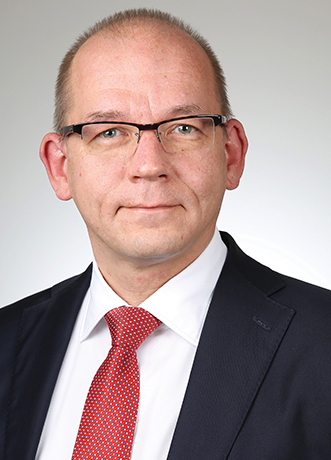Following the sovereign debt crisis, Europe's funding safeguard was set up to ensure regional stability. While most countries no longer need propping up, the European Stability Mechanism is still busy, as head of funding and investor relations Siegfried Ruhl tells David Wigan.
The European financial crisis might be described as a three-part drama. The beginning was the banking crisis that emanated from the collapse of the US mortgage market. The middle was the near-bankruptcy of some European governments, and the end was the work of the European Financial Stability Facility (EFSF), whose backstop funding kept Europe afloat.
The EFSF was launched at the height of the sovereign debt crisis in 2010, after first Greece, then Ireland and soon Spain, Portugal and Cyprus effectively lost access to capital markets, and 10-year interest rates in those countries rose as high as 35%. Backed by euro area member states and the International Monetary Fund, this special purpose vehicle was given €750bn to prevent European countries from bankruptcy. In 2012, a permanent body, the European Stability Mechanism (ESM), was set up to succeed the EFSF in its funding tasks (the EFSF still exists as a legal entity and a big issuer of bonds, but it can no longer make new loans).
“Our mandate was and is to safeguard the financial stability of Europe, starting from the height of the debt crises, when there was pressure to act quickly, and to ensure that financial assistance in the form of loans continues to be linked to reforms and conditionality,” says Siegfried Ruhl, ESM head of funding and investor relations. “We will be in existence until 2056, when the last loan under our programme is set to be paid back, after which we will cease to exist.”
Aiding recovery
The EFSF and ESM have disbursed €254.5bn to five countries in recent years, and have witnessed a stunning turnaround in the countries they have helped. Ireland’s economy was the fastest growing in the EU for the third straight year during 2016, although by a narrower margin than previously. In second place was Spain, which in the second quarter of 2017 posted its fastest quarterly pace of growth since the third quarter of 2015 and edged national gross domestic product above a peak seen at the beginning of 2008.
ESM funds for Spain were used entirely to restructure the banking system. While €100bn was made available, eventually only €41.3bn was delivered to the Spanish government, which used it to consolidate and modernise the troubled savings bank sector and reform ownership structures and risk management. Spain exited the programme in December 2013 and has made early repayments on loans maturing in 2025 and 2027.
Three other countries have also ceased requiring ESM support, with Cyprus the latest to leave the programme in March 2016. Ireland finished in December 2013 and Portugal had no requirement beyond May 2014. The only remaining active borrower is Greece, which was worst hit by the sovereign debt crisis and in most need of extensive aid.
Greece's slippery slope
Between 2010 and 2012, Greece borrowed nearly €200bn from individual European states and the EFSF, but this proved to be insufficient and the country fell into crisis again in 2015. Amid considerable acrimony, a third programme of up to €86bn was agreed. Greece has received some two thirds of the total funds disbursed by the ESM and the EFSF, which now own half of Greece’s debt.
Greece will not have to start repaying its loans (which have an average maturity of 32.5 years) before 2034, but the fund will continue to finance those assets through shorter dated issuance in the bond markets, where it has established itself as a consistently reliable issuer across the yield curve, and in the process has become the biggest ‘supranational’ issuer of euro-denominated bonds in the world.
“Our funding strategy is diversified, which means we are not funding loans back to back but rather issuing to all parts of the yield curve, starting with a bill programme and going out to 39 years,” says Mr Ruhl. “The average maturity is shorter than the maturity of the loans, so we roll over the funding on a regular basis and we are in the market every few weeks.”
Expansion of investors
Over six years the mechanism has worked to expand its pool of investors and now draws on a 1500-strong group that includes central banks, treasuries, pension funds, asset managers and sovereign wealth funds. Given the wide range of risk appetite among the group, the mechanism caters to a variety of risk appetites and duration requirements.
One such recent deal was a dual-tranche issue comprising a new 10-year benchmark bond and a tap of an existing 39-year bond. EFSF pricing tends to come in somewhere between the French and German sovereigns, its biggest shareholders, and the spread of the 0.875% July 2027 issue was fixed at mid-swaps minus 1 basis point, while the 2056 bond was fixed at mid-swaps plus 38 basis points.
“This year we aim to do €61.5bn, and for each transaction we assess the market needs and what investors are looking for, of course taking into account the political landscape,” says Mr Ruhl. “The bottom line is the funding needs of our programme countries.”



